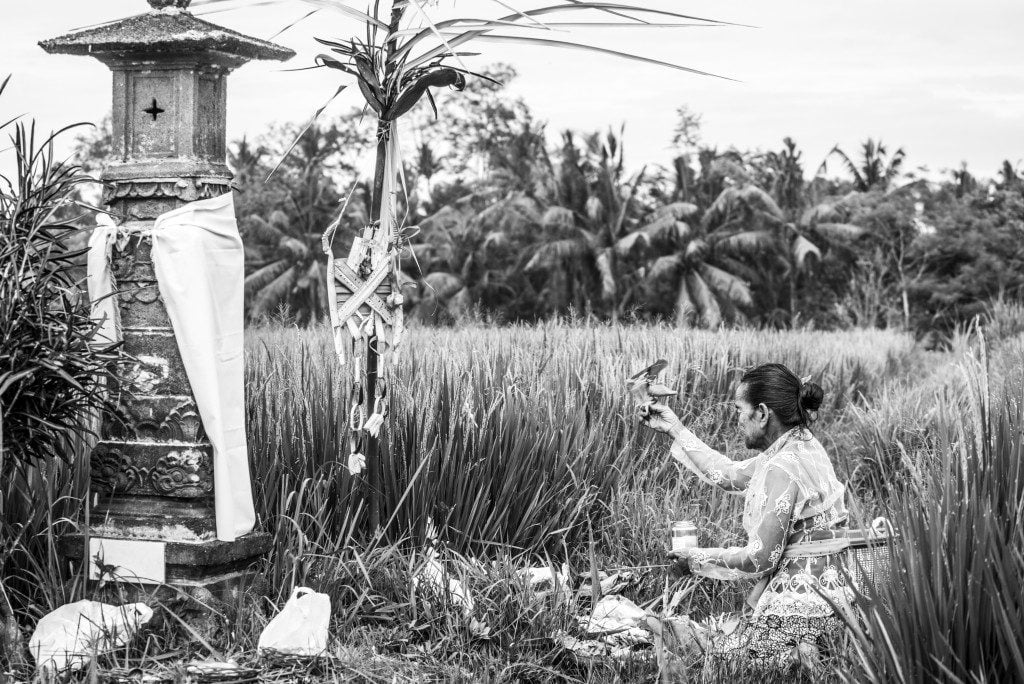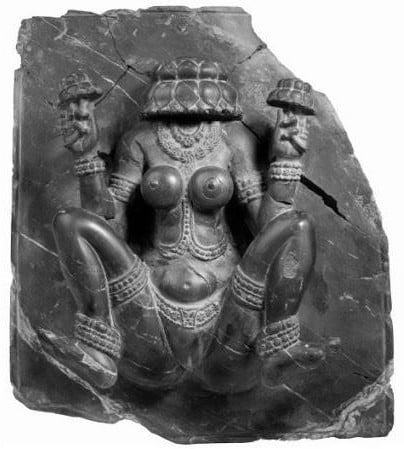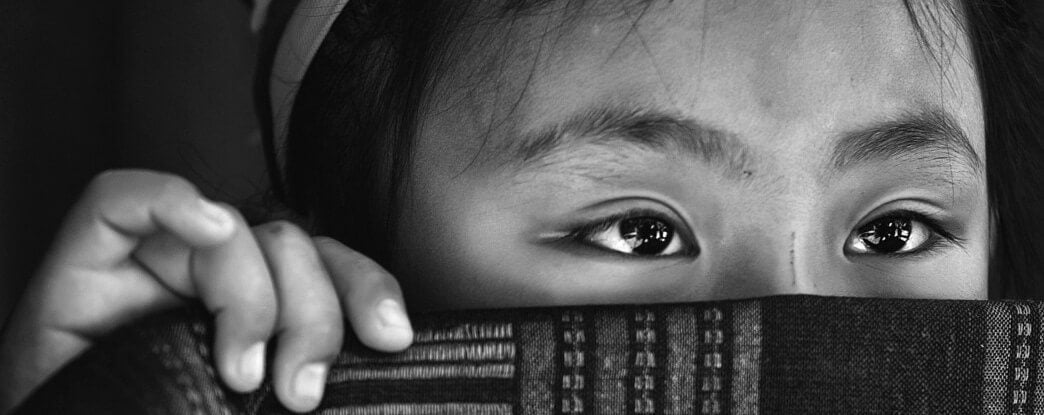There are many origin myths and much folklore about rice, it is believed that a goddesses gave rice to humans and taught them how to grow it. Religious use of rice takes place in India, China, Thailand, Sri Lanka, Malaysia and Bali.
In Asia, the rice spirit is female and often a mother figure. In Thailand, the Rice Goddess is Mae Posop and the Indonesian Rice Goddess, Devi Sri, are treated in similar ways- respectful and protective. Discover Myth, History and Folklore of RICE in Indonesia.
In this Article
The Importance of Rice in Indonesia
Indonesia is an agricultural nation with about 40 million farmers most depending on rice as their main crop. Rice also plays an important cultural role, symbolizing life and prosperity. Much of Indonesian history, mythology, and festivals, are centered around this precious staple.
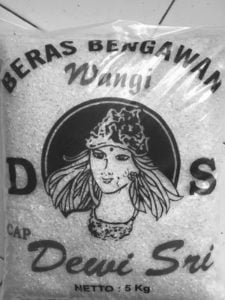
While in Indonesia we were used to eat rice, a lot of rice, for breakfast, lunch and dinner, either as a main dish, as a side dish or sweet, with other vegetables, fruits, or meat. We also eat red rice and unpolished rice. There are over 6.500 scrumptious local varieties and delicious specialty rice foods in Indonesia, like:
Ketuput liontong – rice rolled and steamed in banana leaves,
nasi uduk – rice cooked in coconut milk,
nasi kuning – rice cooked with coconut milk and turmeric,
ketupat – rice steamed in woven packets of coconut fronds,
lontong – rice steamed in banana leaves,
intip or rengginang – rice crackers,
nasi goreng – fried rice sprinkled with saffron or turmeric, Nasi goreng is omnipresent in Indonesia and considered as national dish and
nasi tumpeng – a cone of white rice garnished with red, black, and yellow food.
Nasi Tumpeng, or yellow rice, is traditionally served to celebrate special occasion, such as birthdays, marriages or even success at work. It is composed of rice flavored with coconut milk and turmeric to achieve a yellow tinge symbolizing wealth and high morals in the shape of a cone. The height of the cone symbolizes the greatness of God, and the traditional dishes surrounding the base of the cone, such as fried chicken, coconut beef stew, soybean cake, beef jerky, shredded potato cakes, and chili paste, symbolize nature’s abundance.
HISTORY of rice in JAVA
ETYMOLOGY: Words for rice
Rice is the staple diet of the Balinese. The word nasi (rice) also means “meal”. The Balinese cannot really conceive of a meal without rice and the number of words for rice indicates its importance:

Padi – rice growing in the field or rice that has been cut but not threshed, or cut and threshed, but not husked (the husk and bran are removed at the mill, or in the old days by pounding with a mortar and pestle); the English word “paddy” comes from padi.
Gabah – unmilled rice that has been separated from the stems.
Beras – milled, uncooked rice.
Nasi – cooked rice.
There are three different types of rice that are cultivated:
Barak – red rice.
Injin – black rice, which is in fact a dark, blackberry purple.
Ketan – white sticky, glutinous rice.
There are four sacred directions, each of which has a sacred color,
red,
black,
white and
yellow.
Yava literally means “barley” in Sanskrit. Barley is not a traditional Javanese crop, but the word may have been used as a literary Device, because it reproduced the approximate sound of the indigenous word for the island.
Java may well have been known for its production of grain, particularly rice, and “barley” may have been a convenient Sanskrit metaphor for cereals in general; barley may have played the role of a daily staple that Valmiki considered to be rice. The Importance of Rice in Indonesia is analogous to rice in Java.
Ptolemy, in his work in the second century, described “Iabadiou,” which he correctly said meant “island of barley,” as being very fertile and full of gold.
Evidence of wild rice on the island of Sulawesi dates from 3000 BC
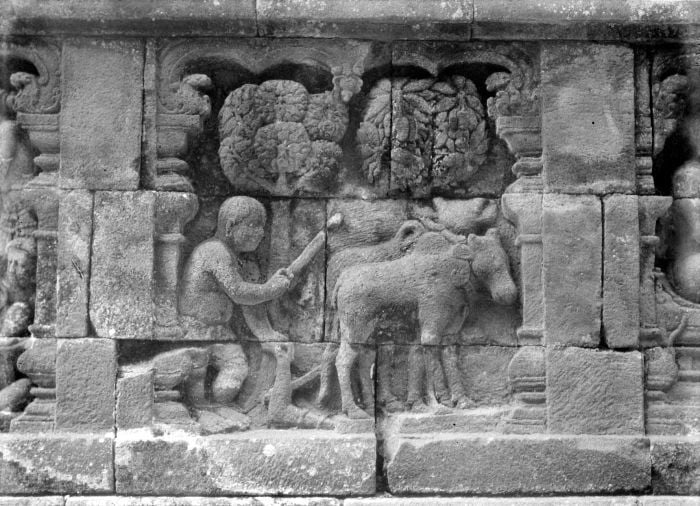
The bas-relief in 8th century Borobudur depicting farmer plowing the field pulled by buffalo.
Evidence for the earliest cultivation, however, comes from eighth century stone inscriptions from the central island of Java, which show kings levied taxes in rice.
Rice production in Indonesian history is linked to the development of iron tools and the domestication of wild Asian Water Buffalo as water buffalo for cultivation of fields and manure for fertilizer. Rice production requires exposure to the sun. Once covered in dense forest, much of the Indonesian landscape has been gradually cleared for permanent fields and settlements as rice cultivation developed over the last fifteen hundred years.
Rice-fish farming
Rice-fish farming has a long history in Indonesia, farmers have developed the systems that are now used. The widely practiced rice-fish systems in irrigated areas of West Java are
- minapadi,
- penyelang and
- fish palawija.
- A special system called sawah tambak also exists in the coastal areas of East Java.
Fish produced from ricefields are mostly seedfish for restocking in growout systems, such as floating net and bamboo cages, running water (concrete tanks) and irrigation canal systems.
Minapadi system

In this system, rice and fish are concurrently raised in the same area. A trench refuge is used. The payaman method is another kind of minapadi system. The difference is that the rice-fish field is connected to a pond refuge instead of a trench.
Penyelang system
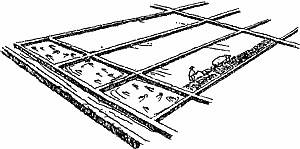
This is the culture of fish in between the first and second rice crops. The fish culture period is shorter than in palawija system. A portion of the rice field with rice stubbles is immediately stocked with common carp, while preparing the remaining portion to the dry season rice crop.
Palawija ikan system
Immediately after the harvest of the dry season rice crop, dikes are raised by using a hoe, to
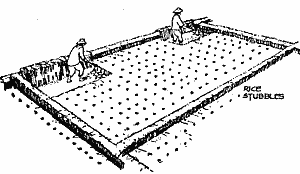
contain water depth of 30-40 cm. In North Sumatra, consumption size is produced in the palawija system. The usual common carp sizes stocked are 30-50 g or 50-100 g at the rate of 1 000- 1 500 (no feeding); and 1 500-3 000 (with supplemental feeding). Supplemental feeds are rice bran, chopped cassava, corn kernel soaked in water, poultry feed, kitchen refuse and others.
Harvesting the fish is done by draining the field.
Ducks
Ducks are allowed to roam in the rice field 25-30 days after transplanting the rice. Ducks have potential for controlling golden snail (Pomacea spp.) infestation on rice at a density of 25 ducks/ha. The ducks have a small refuge pond where they are kept when necessary. The addition of ducks in the last pattern made it the most profitable pattern. The year-round supply of eggs and meet provides monthly income to a farmer.

In the sixteenth century, Europeans visiting the Indonesian islands saw rice as a new prestige food served to the aristocracy during ceremonies and feasts.
The island of Java is now part of the Republic of Indonesia and the Javanese make up 65% of all Indonesians. Though predominantly Muslim today, Java was once a center of Hinduism and Buddhism. Both religions flourished between the 4th and 16th century before being succeeded by Islam.
Goddess Worship
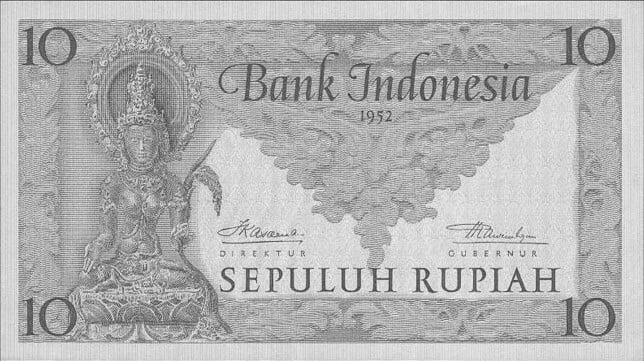
During those twelve centuries, goddess worship was very much alive as, even after the dominance of Hinduism, native goddesses became merged in identity with their Hindu counterparts. Today it represents the synchronicity between Hinduism, Buddhism, and the Muslim religion within Java.
For Indonesians, rice is also a celebration of life. In animist belief systems many objects may be thought to hold spirits, but only rice has a spirit comparable to humans. With its seasons of birth, death and rebirth, the plant’s life cycle is aligned with that of humanity.
Rice becomes pregnant, gives birth, and dies. Therefore, the fertility of the crop is allied with the fertility of females. Because of this, rice is seen as female in gender. In Java and Bali rice is associated with fertility and was considered as the incarnation of the goddess Devi Sri.
Men were subject to many prohibitions where rice was concerned. They were forbidden to cook it, and although they always prepared the land it was the women who planted and otherwise handled the rice. Every stage in rice cultivation and processing was an opportunity to pay respect to the goddess.
DEWI or DEVI SHRI
Along, long time ago, on the island of Java there were no rice plants. The people of the earth had only grown cassava for their daily food. Rice was only permitted to be grown in heaven. At that time rice was the food of the gods.
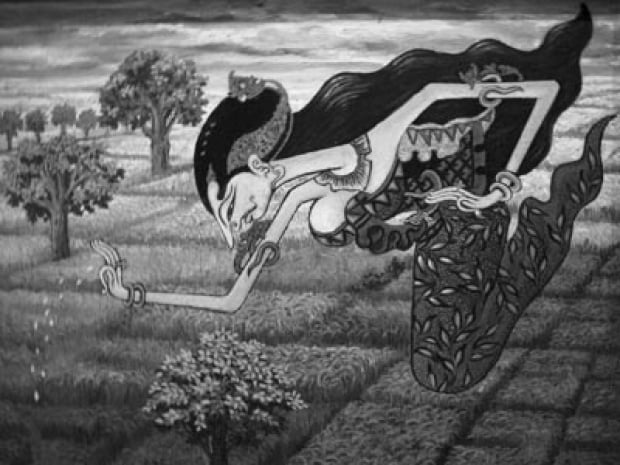
At that time man was permitted to visit heaven by walking on the clouds. The gods and goddesses often came down to earth to chat with man.
One day a youth went to heaven. He happened to see the gods dining on food that he had not seen on earth. The youth did not know that the food he saw was rice.
The fragrant smell of the rice made the youth’s mouth water. How he wished to taste the delicious rice!
He sought a way to get his wish. He went to see Devi Sri, the Goddess of Rice. He found the courage to beg Devi Sri to be permitted to stay in heaven and to learn to grow rice.
He said, “Devi Sri, Goddess of Rice. I beg to be permitted to stay for a while in heaven. Please allow me to help plant, harvest, and pound your rice. Even if I get only a handful of rice, I want to help. I want to taste this rice, even if only a little.”
Devi Sri, who was wise and kind-hearted, agreed. “Did you know that rice comes from this plant?” She showed him a rice plant. “You may work here and learn to be a farmer and cultivate rice.”
How joyful was the youth to get permission to stay in heaven. Devi Sri taught the youth how to plant rice. First she taught him how to plough the rice field with a kind of tool to turn over the soil. It was called waluku.
Then she taught him how to soften the soil with a harrow called a garu.
After the soil was softened, the youth learned how to irrigate, raise seedlings, plant, and harvest. When the rice plant ripened, the goddess showed him how to cut the stalk using a small palm-held reaping knife called an ani-ani.
Devi Sri also taught the youth how to pound the rice in a rice mortar called lesung. When all of this work was done, the youth was at last allowed to taste a small handful of the rice. It was delicious! Just as he had imagined it would be.
The youth stayed on in heaven and learned rice farming well. He also enjoyed delicious rice many times.
But after several years of hard work as a farmer in heaven, the youth decided to go back home to earth. He longed for his family, relatives, and neighbors.
“How happy they would be if the people on Java Island could enjoy this delicious rice,” he thought. “By eating rice, the people could become as healthy and strong as the gods.”
The youth approached Devi Sri and asked permission to go down to earth to visit his family and friends, whom he had not seen in such a long time. Devi Sri agreed. But very early in the morning, without the gods’ knowledge, the youth took several ripe rice stalks. He carried them with him to earth.
Arriving on earth, the youth planted the rice grains just the way he had learned in heaven. The rice grew rapidly. He worked hard and his plants developed well.
As soon as he had a harvest, he gave rice seeds to all of his neighbors and showed them how to plant and care for the rice.
Eventually all places on Java Island were covered with rice plants. When the rice was ripening for harvest, a golden yellow color covered the entire land of Java Island.
One day the gods came to visit earth. How startled they were to see golden rice plants stretching in all directions. They hurried back to heaven and reported to Devi Sri. The gods were furious. Rice was permitted only in heaven.
Devi Sri descended to earth. She knew this must be because of the youth who had helped grow rice in heaven. He must have stolen the rice seeds when he left heaven.
She soon met that youth.
At first Devi Sri was angry, “Young man, why did you betray my trust? You should not have stolen rice. This is the food of the gods.”
“Forgive me, Devi Sri,” said the youth.
“I did take rice seeds back from heaven without asking permission first. I did not do this for my own interest, Devi Sri. I brought this rice back for the benefit of all the people on Java Island. These people had only cassavas to eat. I took pity on my fellow men and shared with them the rice seeds so that they also could taste delicious rice. I know I have angered you, Devi Sri. I am willing to accept punishment for what I have done.”
Devi Sri’s anger subsided. The kind-hearted youth had intended to do something sincere and noble because he thought of other people.
“I forgive you,” replied Devi Sri. “But you should always ask permission first and not take things by stealing. As punishment for this, I will never allow another human to come to heaven, the place where the gods live.”
“However,” she continued, “You will be allowed to cultivate this rice. But take notice that this rice plant is like my child. Take good care of it just as I have taught you.”
Devi Sri gave clear instructions.
“Irrigate the rice field regularly. Weed the wild plants around the rice plants. Fertilize the soil. Harvest carefully with the ani-ani knife, so that you do not waste any grains or damage them. Let the birds also enjoy a bit of the delicious rice. Don’t kill them, because the birds are the beloved animals of the gods. If you don’t pay attention to my orders, I will send natural calamities to destroy your work.”
That was Devi Sri’s advice.
Before Devi Sri flew back to heaven, she spoke once more.
“In order to make the rice plants grow best, follow nature’s rules. Plant the rice at the right time.
I will give a sign from heaven by dropping jasmine flowers from my hair bun. These flowers will become waluku stars (Orion). This is the sign that the season for planting has come.”
The Javanese Rice Goddess is now known as Devi Sri, Shri Devi orBok Sri. Undoubtedly, She may have started with a different name but when Hinduism was at its height she became Shri Devi, and her consort Shiva and for othersas Lakshmi, Vishnus wife.

Even with her humble-looking small shrines which still dot the most remote areas of Java, Devi Sri is still invoked to ensure good harvests. As Goddess of Agriculture, Devi Sri is often worshiped alongside the Goddess of Wealth Lakshmi. Both are still visited in Belahan temple in Pasuruan, a small water temple, where Lakshmi, springs water flowing from her breasts.
Also in big temples Sri Devi is found, like in the Borobudur Temple Compounds. This Buddhist temple, dating from the 8th and 9th century, is located in central Java. It was built in three tiers: a pyramidal base with five concentric square terraces, the trunk of a cone with three circular platforms and, at the top, a monumental stupa. Around the circular platforms are 72 openwork Stupas, each containing a statue of the Buddha. The largest restoration project was undertaken between 1975 and 1982 by the Indonesian government and UNESCO, followed by the monument’s listing as a UNESCO World Heritage Site.
The walls and balustrades are decorated with fine low reliefs, showing Buddhas, as well as everyday life. This are two of the hundreds of realistically carved stone reliefs that wind around the sanctuary: Rich images of rice cultivation, rice barn, and mouse pest investing a rice field are evident in Karmawibhangga bas-reliefs of Borobudur. Divisions of labour between men, women, and animals that are still in place in Indonesian rice cultivation, were carved into relief friezes on the ninth century Prambanan temples in Central Java:
a water buffalo attached to a plough; women planting seedlings and pounding grain; and a man carrying sheaves of rice on each end of a pole across his shoulders (pikulan).

The relief shows a harvest scene with men and women cutting rice in the field and carrying the bound rice-sheaves on their shoulders. Probably the goddess is Devi Sri.
SYNCRETISM in JAVA
Islam is the official religion of Java. The good Muslim answers the call to the mosque on Friday, observes the fasting month of Ramadan, says his prayers daily, reads the Koran, and makes his pilgrimage to Mecca. Yet this same Muslim may have a knowledge and feeling for Hindu-Buddhist philosophy and a deep interest in the religious dramas of the Ramayana, and he may, if his son is sick or if he is about to move into a new house, hold a selametan (ritual communal meal) to propitiate those ancient spirits that have influenced all Javanese life since long before Hinduism, Buddhism or Islam came to this island that is the heart of modern Indonesia.
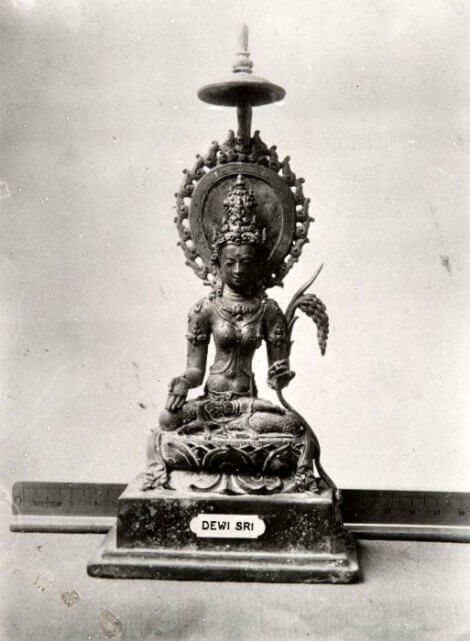
The religion of Java is thus a remarkable accommodation, within the over-arching Islamic system, of centuries-old mystical ans aesthetic Indian influences and still pervasive beliefs in animistic spirits and ancestor worship stemming form the earliest prehistory of the Javanese people.
An especially interesting example of this syncretism is the statues, made both of wood and terracotta, representing the goddess Devi Sri and her consort Sadono. In the pantheon of Javanese gods and goddesses, Sri was the goddess of fertility ans protectress of rice fields, hence a deity of great importance. She was clearly an adaptation of the Indian goddess Sri Devi, the female form of Vishnu and goddess of prosperity, fertility and beauty. In bronze statues dating form the Central Javanese Period (A.D. 650-950) Sri is depicted with a stalk of rice and in a gift-bestowing posture.
The Loro Blonyo
or the ‘Inseparable Couple’ as they are also commonly known, are part of traditional Javanese beliefs and represent the sanctity of marriage within Javanese culture. In Java, Loro means ‘two’ and Blonyo means ‘makeup’. The Inseparable Couple are mainly depicted sitting side by side in traditional Javanese clothing and are placed in a the main chamber of the house as they are sacred within Javanese culture. Loro Blonyo is traditionally known as Devi Sri – goddess of fertility and prosperity and the female aspect of Vishnu or Sadana- the male rice spirit. The story of the relationship between these two deities allows people to remember the value of a good marriage.
In a traditional Javanese house Loro Blonyo are placed at the ‘sacred meditation chamber called senthong-tengah’. The homes of the wealthy would also contain rooms for the goddess of fertility and prosperity. It would contain a ceremonial bed, known as a ‘krobongan’ which would be kept for Devi Sri to rest upon. The statue of Loro Blonyo would then be placed at the foot of the bed surrounded by incense, oil burners, food, water, flowers and a rice paddy. The household would make sure this shrine would be prepared in case Devi Sri ever blessed the house with her presence. Historically, these figures were presented on their own lavish bed, and so were affordable only by the wealthy.
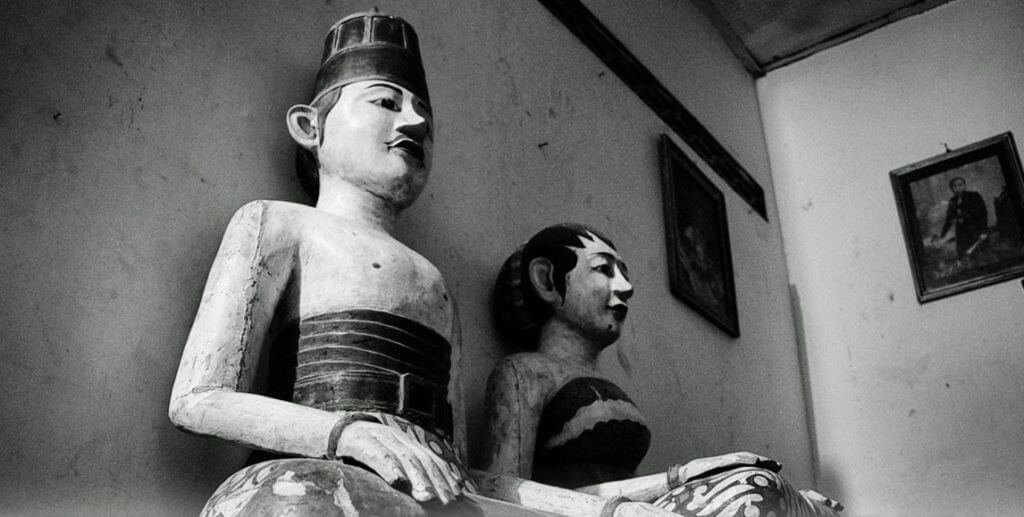
The story of Devi Sri originated from a story about the supreme god within Javanese culture, Batara Guru, who cursed a man as he failed to obey Guru’s commands. The man fell to the bottom of the sea and ended up in the stomach of Nagaraja, a snake who is often featured within Hinduism and Buddhism. The man made Nagaraja very ill but Batara Guru touched it and Nagaraja threw up the badness, creating two creatures who are now known as Sri and Sudana. Devi Sri is also known for creating fertile land for rice to grow as the land where she was buried was prosperous and the rice farmers who worked there became rich.
Still the union of Devi Sri with Djaka Sudana is celebrated by people working in the rice fields. They celebrate the marriage of Devi Sri and Djaka Sudana and as part of its ritual identifies every wife with Devi Sri and every husband with Djaka Sudana.
Today the appearance of modern day’s Loro Blonyo has changed. They no longer stand or sit in a formal manner only. They now have more cheerful and gay appearance. Their outfits, which are still traditional, have a modern touch here and there. Sometimes they wear batik ,basahan style, or other costumes of Javanese tradition. They are still a symbol of prosperity or continuous prosperity.
During wedding ceremonies, they were replaced by the real bride and groom adorned in garments that replicated the home’s beloved Loro Blonyo.
Loro blonyo is representative of family life between husband and wife as beautiful relationship in harmony.
Another wedding pattern is exemplified by the “marriage” of two fistfuls of rice, collected before the harvest time, practiced on the islands of Java, Bali, and Lombok; the two fistfuls were treated like a pair of spouses, a wedding ceremony between them was celebrated, and then they were brought to the storehouse and stored there so that the rice could grow. In Bali the wedding of Betari Sri Dewi and Betara Sedana is held to seek an ample rice harvest and a bounty of material wealth.
Myth: On the origin of rice
On the island of Java, there was once a king with supernatural powers who created a beautiful woman called Retno Dumilah. The king fell in love with her, but she refused to marry him. The king became angry and threatened her. The frightened young woman eventually agreed to marry the king, if he created these three things:
- food for the people that did not need to be cultivated,
- cloth that would not become wrinkled, and
- a set of gamelon (traditional Javanese musical instruments) that would produce music without being played.
Despite the king’s magical powers, he could not create these things. Frustrated and impatient for love, he embraced her. She promptly died of shock, but from the earth where she was buried grew a plant that would produce food forever – RICE.
According to some versions, also other fruit bearing plants originated from the corpse of a young girl; dry land rice from the navel; coconut palms from the head and genitals; ripened fruit dangled from both hands, and fruit originated from the legs and ripened in the ground.
Among the Manggarai people of Flores Island, it is said that rice and maize originated from the corpse of a murdered child.
According to the Japanese classic Kojiki (“Record of ancient matters’), compiled in 712 AD, Susanoo slew the food goddess Ohogetsu-hime. Silkworms came from her head, rice seeds from both eyes, millet from both ears, red beans from her nose, wheat from her genitals, and soybeans from her buttocks.
In this story, rice is brought by goddess Sita, Rama’s wife. Sita, however, is also a manifestation of Laksmi.
It comes from India and relates that Jaki mata, who is also known as Sita, had grain, while men did not. Jaki mata had six fingers on one hand.
One day she cut one off and planted it in the ground, and after a while bamboo grew out of it.
The sections of this bamboo contained all kinds of seeds. The bamboo’s flower growing out of the interstice between the sections indeed looks like a stalk of rice.
One day a pig bit into the bamboo and some of the grain fell out, which the pig then ate. His owner found this grain in the pig’s feces and followed the pig when it returned to the bamboo. The man split the bamboo open and gathered the grain, and there was enough to feed the village.
WEST JAVA: On rice
The Sudanese in particular have some fascinating legends:
If one wonders about the beginning of padi and how the earth was first organized then the Sundanese have all the stories. One of the myths that is very well known by the Sundanese is Nyi Pohaci Sanghiang Sri. This story about Devi Sri is written in Wawacan Sulanjana:
MYTH: DEVI SRI
Once upon a time in the heavens, the Batara Guru commanded all the gods and goddesses to contribute their power in order to build a new palace. Anybody who disobeyed this commandment would lose his or her head.
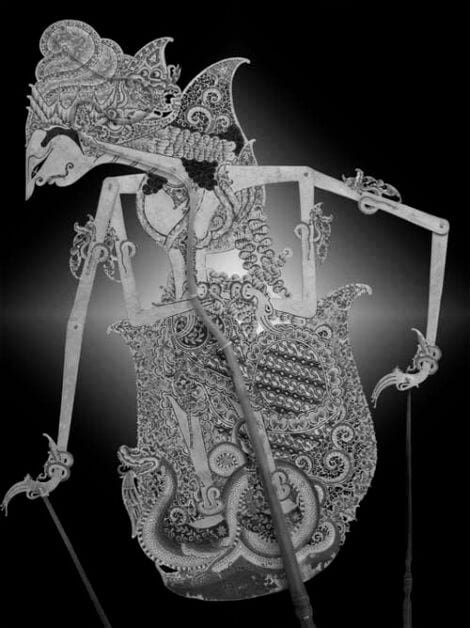
Upon hearing the Batara Guru’s commandment, one of the gods, Anta, was very anxious. He didn’t have arms or legs, and he wasn’t sure how he could possibly do the job. Anta was shaped as a snake and he couldn’t work. He sought advice from one of his friends, but unfortunately his friend was also confused by Anta’s bad luck. Anta became very upset and cried.
As he was crying, three teardrops fell to the ground. Amazingly, after touching the ground those teardrops became three eggs. His friend advised him to offer those eggs to the Batara Guru, hoping that he would give a fair judgment.
With the three eggs in his mouth, Anta went to the Batara Guru’s palace. On the way there, he was approached by a black bird who asked him a question. He couldn’t answer because of the eggs in his mouth, but the bird thought that Anta was being arrogant. It became furious and began to attack Anta, and as a result one egg was shattered. Anta quickly tried to hied in the bushes, but the bird was waiting for him.
The second attack left Anta with only one egg to offer to the Batara Guru.
Finally, he arrived at the palace and offered his teardrop (in the shape of an egg) to the Batara Guru. The offer was accepted and the Batara Guru asked him to nest the egg until it hatched. Miraculously, the egg hatched into a very beautiful girl. He gave the baby girl to the Batara Guru and his wife.
Nyi Pohi Sanghian Sri was her name, and she grew up into a beautiful princess, becoming more and more beautiful as the days passed by. As her beauty grew, every man who saw her became attracted to her. Even her stepfather, the Batara Guru, started to feel an attraction toward her.
Seeing the Batara Guru’s new attitude toward Nyi Pohaci, all the gods became so worried about the situation that they conspired to separate Nyi Pohaci and the Batara Guru. To keep the peace in the heavens, and to maintain Nyi Pohaci’s good name, all the gods planned for her death. She was poisoned and her body buried on earth in a hidden place. But the graveyard was to hold a strange sign, for at the time of her burial, up grew a very useful plant that would forever benefit all human beings. From her eyes grew the plant that is called padi (rice paddy).
Version II– Devi Sri transforms into rice
The earlier theme of Sri’s association with a large snake is continued in the Dampu Awang version

Here the snake Antaboga hatches out two eggs, out of which appear Devi Sri and Sedana. This is similar to the version of the Manikmaya story, in which the Retna Dumilah slips out of Batara Guru’s hand and falls down into the seventh earth, where it is swallowed by Antaboga. Antaboga is then brought to heaven and there produces (=gives birth to) the Retna Dumilah. In the continuation of the Dampu Awang version, Batara Guru places Sri in the care of his wife, Devi Uma, and Sedana is cared for by Nerada. Both the children die, however, and Sedana’s body is transformed into iron, silver, gold, diamonds, and the like, while Sri changes into all kinds of seeds, among which is the rice.
III– A similar myth:
In the Manikmaya it is told that the god Batara Guru wants to marry Tisnawati, who appears out of the jewel Retna Dumilah. Tisnawati, however, sets certain conditions before consenting and Kalagumarang is ordered to fulfill them. While attempting to do this, Kalagumarang happens upon Devi Sri, who is bathing in the garden Banjaran Sari. She flees and asks protection from Sang Vishnu Murti, who advises her to incarnate as the queen of Mendang Kamulan. While she is on her way there, Kalagumarang continues to attempt to molest her and is changed into a pig.
Devi Sri arrives at Mendang Kamulan and incarnates as the queen, while Vishnu becomes the king, named Mengukuan. After a while Batara Guru becomes impatient and attempts to rape Tisnawati, who dies as a consequence. She is buried in Mendang Kamulan, and from her head springs the coconut palm, from her hands the banana plant, and from her teeth the maize plant, while her pubic region gives rise to the rice.
Variants of this myth relate that Sri, while fleeing from Kalagumarang, suddenly disappears. In the place where this happens, the same plants appear that came out of Tisnawati’s body in the earlier version.
Tisnawati’s rice, however, grows on dry fields, while that originating from Sri needs irrigated fields.
IV– A different, Sundanese version
In which Sanghyang (=Batara) Guru orders Nerada to tell the gods to gather useful things for a construction.
All the gods busily set about doing this except for Dewa Anta (boga), who does not participate and cries because he has no arms in which to carry anything. Three of his tears turn into eggs, which Nerada then orders him to offer toA similar myth: Guru. Carrying the eggs in his mouth, Anta meets a bird, and it asks him where he is going. Because Anta does not answer, the bird becomes angry and attacks him, causing Anta to drop two of the eggs. These break and turn into a pig and a creature combining the features of a dog and a pig.
These two set out to seek their mother. The last egg is offered to Guru, and from it hatches a beautiful girl who is called Devi Pohaci or Devi Asri (=Devi Sri). This child is nursed by Devi Uma until her adolescence, making Devi Uma her adopted mother and Guru her adopted father. To prevent Guru from marrying her and thus committing some form of incest, Deva Sanghyang Wenang kills her. She is buried, and from her body sprout all kinds of plants: the coconut tree, rice, bamboo, and so on.
V– Another Sundanese variant from the village of Walahir
Here it is told that a shaft of light was seen in the sky that slowly came to earth. There it assumed the shape of a boy and a girl. They were asked to return to the sky, but they refused and went on their way. They roamed aimlessly until they reached the shore. Here the boy said he wanted to go on alone, but if the girl needed him she should just call his name, Ki Bagus Sedana.
The girl, whom he called Bagawan Sang Sri, went on alone until one day she met grandmother and grandfather Pangebonan. These were very happy to meet with such a beautiful girl and asked who she was and where she came from. Sri answered that she did not know her own origins but if they wanted to take care of her she was willing, as long as they fulfilled certain requirements, which she listed. Hearing those requirements the old couple became angry and frightened Sri to death. They buried her, and from her body there grew rice, bamboo, and a variety of other plants that the old couple tended.
At base, all these forms of the goddess of agriculture or fertility are manifestations of Laksmi, who was born out of the froth created by the churning of the milk ocean.
BALI: On RICE
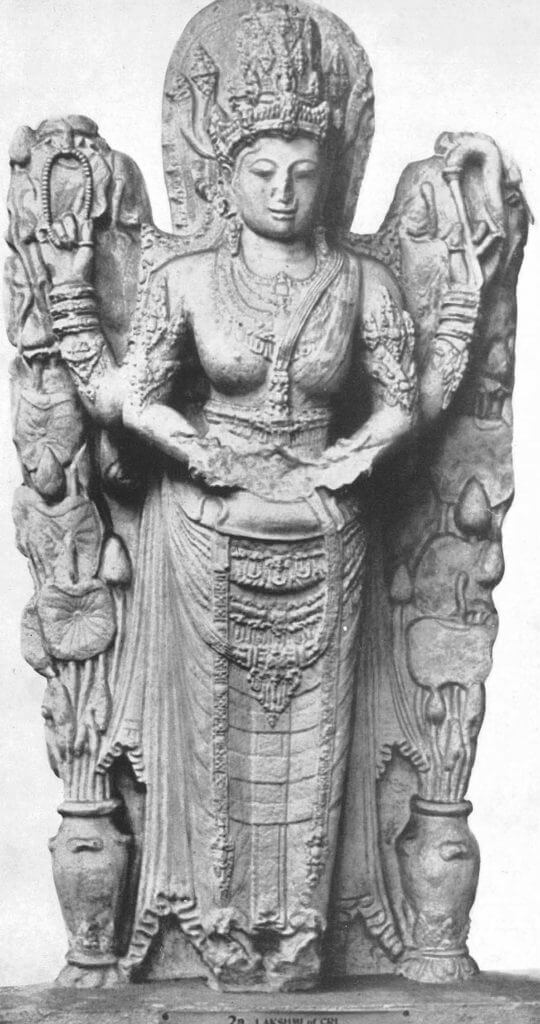
Once upon a time, Bhatara Guru (the head of Gods) who resides in heaven held a great ceremony. It is a tradition that each god should help in the preparation of the ceremony. But the great dragon Ananta Boga looked so sad since he could not help with anything because he did not have hands or feets. It made him sad, he cried alone, but a miracle occurred, his tears that touched the land turned into three eggs. He took those eggs on his mouth; and planned to give Bhatara Guru the eggs as a consolation for his inability in helping the preparation of the ceremony.
On the way, he met another god, the god greeted him, when he answered two of his eggs fell into earth and hatched. One produced a rat and the other a boar. Realizing his mistake, Ananta Boga kept silence on the rest of the way, until he arrived in front of Bhatara Guru. He told Bhatara Guru what happened on him, and presented the remaining egg. Bhatara Guru accepted the egg.
After a couple of days, a beautiful girl came out from the egg. Bhatara Guru named her Devi Sri and loved her very much, that made several goddess jealous on her. They tried to make Devi Sri ‘disappear’ from heaven. One day they manage to poison Devi Sri, she died and the wicked goddess buried her body deep in the earth. After a couple of days a plant (rice) grew from the place where Devi Sri was buried.
Bhatara Guru realized that the plant was Devi Sri.
He came to the earth and told humans to keep that plant especially from rat and jungle pig disturbance since the plant was a goddess and it could give a welfare for human being. But if they did not keep it, they would get a disaster.
FLORES: On RICE
The Rembong people of Flores Island say that when the world began, there were no plants to eat. People were forced to subsist on iron.
Among these people were a man and a woman, now known to the people of Flores as Adam and Eve. This couple had a child, born without arms and legs. Despite this child’s difficult life, the mother loved and took good care of the child. One day, while the mother was out fetching water, the father killed the child, cutting the body into small pieces and spreading these on the ground. In anguish over the disappearance of her child, the mother searched everywhere. The father told her not to worry, assuring her that the child would soon return.
On the seventh day, rice and other plants began sprouting from the ground where the pieces of the child’s flesh were scattered. The young shoots called out to the woman, “Mother!” Her child had been reborn.
SULAWESI: On RICE
In a myth of the Toraja of Sulawesi,
Afisherman often left his wife to go on fishing expeditions; when he came back, he always found a large pot full of rice, but his wife would not tell him from whence it had come. One day, he spied on her through a fissure in the wall of their dwelling and saw that she rubbed her hands together over the pot and thus filled it with rice. Disgusted by this discovery, he reproached her for this unclean procedure; as a result of his reproaches the woman transformed herself into a rice plant, and he became a sago palm.

Asia is the most religiously diverse part of the world—Hinduism in India, Buddhism in Thailand, Islam
in Indonesia, Roman Catholicism in the Philippines, mixed Taoism and Confucianism in China, Buddhism and Shinto in Japan, and so on. In all of these traditions, we found related ideas about the sacred nature of rice, its divine origin, and its special place in human life. Rice culture clearly predates the religious diversity that later became superimposed across the region.
As technology changes agriculture, creating a system where harvest comes closer to a guarantee, traditions and mythology, such as this varied rice stories and Rice- Ceremonies have changed. The ceremonious aspect of rice farming is no longer as prevalent.
The extents of Myths, History and Folklore of RICE in Asia are hardly to be seized here, there is still much more to discover.
~ ○ ~
Works Cited & Multimedia Sources
- MALAYSIA: The Rice Soul- Myths, History and Folklore of RICE Beras or Nasi
- MALAYSIA: Proverbs and wise sayings in relation to RICE Beras or Nasi
- CHINA: On the origin of Rice 稻 – Myths, History and Folklore
- CHINA: Proverbs and wise sayings in relation to RICE 稻
- THAILAND: Mae Posop- Myths, History and Folklore of RICE
- THAILAND: Proverbs and wise sayings in relation to RICE K̄ĥāw
- INDIA: Proverbs and wise sayings in relation to RICE Chaaval
- INDIA: Myths, History and Folklore of RICE
- INDIA: RICE dishes Khichri, Byriani, Kheer, Dosa &Idlly
- THE MOTHER GODDESS OF FERTILITY AND RICE
- BALI- INDONESIA: Myths, History and Folklore of RICE Nasi
- TIMELINE: The story of rice
- INDONESIA: FOLK TALES ON RICE
- INDIA: FOLK TALES ON RICE
- CHINA : FOLK TALES ON RICE 稻
- Borobudur, Courier, Unesco. 1983.
- Dela Cruz Catalino. Rice-fish systems in Indonesia. Fao. http://www.fao.org/docrep/005/y1187e/y1187e19.htm
- https://kepemangkuanekajati.blogspot.com/2016/07/candra-preleka.html?view=classic
- Idarta Wijaya. A Balinese Folktale: Devi Sri (the Rice Goddess). 2007.
- Loro Bonyo. http://www.loroblonyo.org
- Myths of the Sundanese People. http://www.sunda.org/sundanese/myths.htm
- Rice and its history. https://www.sunria.com/pages/rice-and-its-history
- Rice as a Superfood. Encyclopedia of Food and Culture. Encyclopedia.com. 2018. http://www.encyclopedia.com/food/encyclopedias-almanacs-transcripts-and-maps/rice-superfood
- Rice: The Grain That Shapes Cultures, Traditions and Rituals. www.asiarice.org
- The goddess of rice. http://asianfolktales.unescoapceiu.org/en/index.php
- Thomson Gale. Encyclopedia of Religion. 2005.
- Widyani, A.I. (2013) The Ontology of Loro Blonyo as Javanese Heritage. Available online: http://www.academia.edu/7546257/The_Ontology_of_Loro_Blonyo_as_Javanese_Heritage
Keep exploring:
